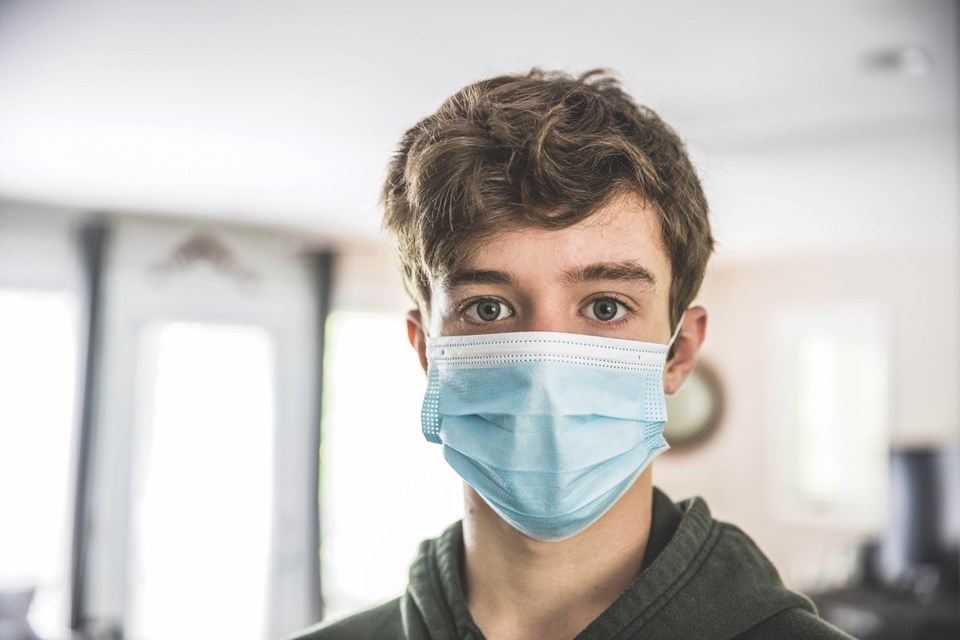Back-to-school butterflies are normal for most children but this fall, they will have to face a new set of stresses as they head back to class during the COVID-19 pandemic.
Worries over what their classrooms will look like to fears about bringing the virus back home, experts say returning to school will cause anxiety for students of all ages.
“We all know these stresses because we are all going through them,” says Nikki Martyn, program head of Early Childhood Studies at University of Guelph-Humber.
“The pandemic is causing increased stress and worry.”
Martyn says symptoms of anxiety were already on the rise for many children and teens even before the pandemic.
With the new school year about to begin, students are worried about what the ‘new normal’ will look like in the classroom.
“The big thing is that kids are worried about infecting someone else. I might not get it, but what if I give it to others? How can I protect my family if I don’t even know if I have it? This is a big burden for them to carry. It’s a weird time, a difficult time and it’s a hard time to feel safe right now,” Martyn said
There are signs of stress and anxiety parents can watch for when their children return to the classroom.
“Each child is different, but parents can look for changes in behavior. Was your child always laughing and now they’re not? Were they social and now isolated? Younger children might show regressions in behaviour by being clingy, thumb sucking and not being able to self-regulate. When stressed, it’s difficult for us to regulate and we can’t learn as well. People are different so there will be different outcomes,” Martyn said.
“Older kids might be emotional, crying, might have difficulty sleeping, avoid their friends or blank out or freeze in social situations.”
Anxiety can also lead to physical changes such as low energy, headaches, upset stomach, nausea, insomnia and frequent colds and infections.
These worries can follow children into the classroom.
“There will be difficulty in learning. When kids are worried, they will have difficulty because stress affects learning. And COVID-19 has just intensified this for all of us,” Martyn says.
The key for kids going back to school, Martyn says, is getting back into a routine.
“There are so many unknowns right now so providing that ‘normal’ kind of structure or routine will provide a little bit of control which will help reduce stress,” she says.
A supportive home environment is critically important.
“Adults need to provide a warm environment so kids can share their feelings and talk about their day. Provide love and support. Be present. Have dinner together at the table and go for walks, to get away from all of the technology. Ensure that children know you are there. Feel with them and be there with them,” Martyn said.
Children can engage in creative activities, such as painting and drawing, to help them express and communicate any negative feelings they may be experiencing. This helps children find positive ways to express complex feelings such as anger, anxiety, sadness and fear.
“It’s not about buying something. It’s about being there. What they will remember through all of this is how their parents dealt with the situation.”
And parents too, need to remember self care.
If parents express negative emotions too often, it may affect their children’s emotional and cognitive development.
Children often take emotional cues from their adult caregivers. It is important that adults manage their own emotions, remain calm, listen to their children’s concerns and help reassure them.
“Parents need to love themselves. Worried parents can affect their child’s stress levels. Listen and be there. It’s not about perfection,” says Martyn.
“Parents, teachers, kids, we are all stressed right now, and we are allowed to be. A regular school day is stressful. But we are all in this together. We can’t put stress on our children like we did in the past and school attendance will be grossly impacted as well.”
But, Martyn says, there is a silver lining in the current crisis.
“We are teaching kids decision making skills and teaching them resilience in that we are all going to get through this. They are learning to be aware of their feelings and to share them, to ask for help and to self-regulate,” she says.
“These things will serve our children well.”
This silver lining is an opportunity for change.
“In the future, kids will ask for help and be able to express themselves. It will help them know that they are not alone. It will allow them to bounce back from challenges,” Martyn said.
“We are building resilience that will impact them for the rest of their lives.”



